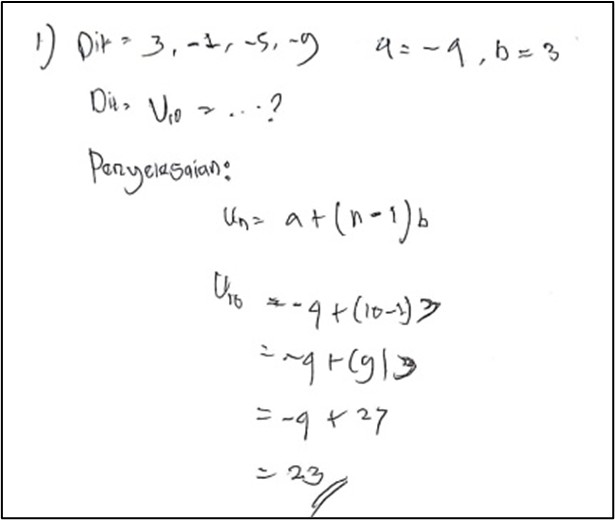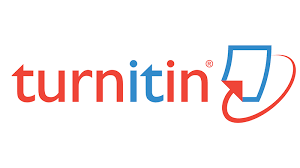CHALLENGES IN GRADE 10 ARITHMETIC SEQUENCES: A NEWMAN’S PROCEDURE ANALYSIS
DOI:
https://doi.org/10.31100/histogram.v9i2.3975Kata Kunci:
Kesulitan Siswa, Barisan dan Deret Aritmetika, Prosedur Newman, Pemecahan MasalahAbstrak
Penelitian ini bertujuan untuk menganalisis kesulitan yang dihadapi siswa Kelas 10 dalam menyelesaikan masalah barisan dan deret aritmatika berdasarkan prosedur Newman. Metode yang digunakan adalah deskriptif kualitatif, dengan tiga peserta dipilih melalui purposive sampling dari sebuah SMA di Indonesia. Analisis kemampuan siswa dilakukan di lima tahap pemecahan masalah: membaca, memahami masalah, transformasi, keterampilan proses, dan pengkodean. Data dikumpulkan melalui tugas pemecahan masalah dan wawancara semi-terstruktur. Hasil penelitian menunjukkan bahwa siswa dengan kemampuan tinggi dapat menyelesaikan masalah dengan mudah. Sebaliknya, siswa dengan kemampuan sedang dan rendah menghadapi berbagai tantangan, terutama dalam memahami masalah dan mengubahnya menjadi model matematika, menerapkan keterampilan proses, dan pengkodean. Kesalahan yang paling umum terjadi selama tahap pemahaman dan transformasi, di mana siswa membutuhkan bantuan untuk mengidentifikasi informasi yang diketahui dan dipertanyakan dengan benar dan sering menerapkan rumus yang salah. Pada tahap keterampilan proses, siswa juga membutuhkan bantuan untuk menerapkan langkah-langkah pemecahan masalah secara sistematis. Temuan ini menyoroti pentingnya memperkuat keterampilan prosedural dan pemahaman konseptual. Studi ini merekomendasikan intervensi pembelajaran yang terstruktur dan spesifik untuk membantu siswa berkinerja rendah memahami dan menerapkan langkah-langkah pemecahan masalah. Penelitian ini memiliki keterbatasan jumlah peserta dan topik yang terbatas, sehingga diperlukan penelitian lebih lanjut untuk generalisasi yang lebih luas.
Referensi
Afifah, A., Darmayanti, R., Sugianto, R., Choirudin, C., & Putra, F. G. (2022). How Does Newman Analyze Student Errors When Solving BADER Story Problems? AMCA Journal of Religion and Society, 2(2). https://doi.org/10.51773/ajrs.v2i2.275
Aini, L. N., Subarinah, S., & Prayitno, S. (2024). Kemampuan Investigasi Matematika pada Materi Barisan dan Deret Ditinjau dari Kemampuan Numerik Siswa. Journal of Classroom Action Research, 6(2), 303–312. https://doi.org/10.29303/jppipa.v6i2.7568Received
Aprilia, L., Anriani, N., & Rafianti, I. (2021). Analisis Kesulitan Siswa dalam Menyelesaikan Soal Pemecahan Masalah Ditinjau dari Kesadaran Metakognisi Siswa. Jurnal Inovasi dan Riset Pendidikan Matematika, 2(1). https://jurnal.untirta.ac.id/index.php/wilangan/article/viewFile/11572/7575
Bruno, A., Qohar, A., Susanto, H., & Permadi, H. (2021). Kesulitan Siswa dalam Pemecahan Masalah Soal Cerita Matematika Dilihat dari Adversity Quotient (AQ). Edumatica: Jurnal Pendidikan Matematika, 11(03), 91–103. https://doi.org/10.22437/edumatica.v11i03.15395
Daswarman, D. (2020). Analisis Kesalahan Mahasiswa dalam Menyelesaikan Soal Matematika Ditinjau dari Prosedur Newman. Jurnal Eksakta Pendidikan (JEP), 4(1), 73-80. https://doi.org/10.24036/jepvol4-iss1/435
Hadi, S. (2019). Analisis Kesulitan dan Self-Efficacy Siswa MA dalam Pemecahan Masalah Matematika. JUPE : Jurnal Pendidikan Mandala, 4(4). https://doi.org/10.58258/jupe.v4i4.1312
Hayati, F., Saragih, S. D., & Gunarto, B. (2024). Analisis Kesulitan Belajar Siswa pada Materi Barisan dan Deret Menggunakan Metode Problem Based Learning. Innovative: Journal of Social Science Research, 4(2), 3335–3346. https://doi.org/10.31004/innovative.v4i2.9727
Hidayat, W., Rohaeti, E. E., Ginanjar, A., & Putri, R. I. I. (2022). An Epub Learning Module and Students’ Mathematical Reasoning Ability: A Development Study. Journal on Mathematics Education, 13(1), 103–118. https://doi.org/10.22342/jme.v13i1.pp103-118
Inayah, F., & Agoestanto, A. (2023). Kemampuan Pemecahan Masalah Ditinjau dari Resiliensi Matematis: Tinjauan Pustaka Sistematis. Jumlahku: Jurnal Matematika Ilmiah STKIP Muhammadiyah Kuningan, 9(1), 74–86. https://doi.org/10.33222/jumlahku.v9i1.2798
Jatmiko, J. (2018). Kesulitan Siswa dalam Memahami Pemecahan Masalah Matematika. Jurnal Ilmiah Pendidikan Matematika, 3(1), 17–20. https://doi.org/10.26877/jipmat.v3i1.2285
Jitendra, A. K., Nelson, G., Pulles, S. M., Kiss, A. J., & Houseworth, J. (2016). Is Mathematical Representation of Problems an Evidence-Based Strategy for Students with Mathematics Difficulties? Exceptional Children, 83(1), 8–25. https://doi.org/10.1177/0014402915625062
Khesya, N., & Ananda, R. (2024). Pengaruh Self-Concept dan Self-Efficacy terhadap Kemampuan Pemecahan Masalah Matematis Siswa Kelas IX. Histogram: Jurnal Pendidikan Matematika, 8(2), 12–22. https://doi.org/10.31100/histogram.v8i2.3829
Khoirunnisa, H., Rahmawati, E., Husein, M. A., & Mahmudah, U. (2024). Analisis Kemampuan Matematis Mahasiswa pada Bilangan Kompleks melalui Perspektif Barisan dan Deret. Jurnal Pendidikan Sultan Agung, 4(2), 122–130. http://doi.org/10.30659/jp-sa.v4i2.37746
Krawitz, J., Chang, Y. P., Yang, K. L., & Schukajlow, S. (2022). The Role of Reading Comprehension in Mathematical Modelling: Improving the Construction of A Real-World Model and Interest in Germany and Taiwan. Educational Studies in Mathematics, 109(2), 337–359. https://doi.org/10.1007/s10649-021-10058-9
Kurniasari, C., Hidajat, D., & Handayani, Y. A. (2022). Analisis Kesulitan Menyelesaikan Soal Cerita Materi Barisan dan Deret Aritmetika dengan Indikator Polya pada Siswa Kelas X. Numeracy, 9(2), 122–137. https://doi.org/10.46244/numeracy.v9i2.1959
Kurniawati, I., Raharjo, T. J., & Khumaedi. (2019). Peningkatan Kemampuan Pemecahan Masalah untuk Mempersiapkan Generasi Unggul Menghadapi Tantangan abad 21. Seminar Nasinal Pascasarjana, 21(2), 701-707. https://proceeding.unnes.ac.id/snpasca/article/view/360
Liljedahl, P., Santos-Trigo, M., Malaspina, U., & Bruder, R. (2016). Problem Solving in Mathematics Education. Springer Nature. https://doi.org/10.1007/978-3-319-40730-2
Logistica, R. S. A., & Awalludin, S. A. (2024). Analysis of Students’ Errors in Solving Literacy and Numeracy Problems: a Newman Procedure Approach. MaPan: Jurnal Matematika dan Pembelajaran, 12(1), 47–63. https://doi.org/10.24252/mapan.2024v12n1a4
Miles, M. B., Huberman, A. M., & Saldana, J. (2014). Qualitative Data Analysis A Methods Sourcebook Edition 3. SAGE Publications, Inc.
Nahdi, D. S., Cahyaningsih, U., Jatisunda, M. G., & Rasyid, A. (2023). Mathematics Interest and Reading Comprehension as Correlates of Elementary Students’ Mathematics Problem-Solving Skills. Edukasiana: Jurnal Inovasi Pendidikan, 3(1), 115–127. https://doi.org/10.56916/ejip.v3i1.510
Noer, S. F., Sugandi, A. I., & Amelia, R. (2023). Analisis Kesalahan dalam Soal-Soal Pemecahan Masalah Siswa SMA Kelas XI pada Materi Barisan dan Deret Aritmatika Ditinjau dari Teori Newman. JPMI (Jurnal Pembelajaran Matematika Inovatif), 6(4), 1369–1378. https://doi.org/10.22460/jpmi.v6i4.17677
Novferma, N. (2016). Analisis Kesulitan dan Self-Efficacy Siswa SMP dalam Pemecahan Masalah Matematika Berbentuk Soal Cerita. Jurnal Riset Pendidikan Matematika, 3(1), 76–87. https://doi.org/10.21831/jrpm.v3i1.10403
Oktaviani, H., Kintoko, K., & Suprihatiningsih, S. (2021). Analisis Kesalahan Newman pada Pemecahan Masalah Siswa Kelas VII SMP N 15 Yogyakarta. Riemann: Research of Mathematics and Mathematics Education, 3(1), 1–8. https://doi.org/10.38114/riemann.v3i1.106
Özcan, Z. Ç., & Doğan, H. (2018). A Longitudinal Study of Early Math Skills, Reading Comprehension and Mathematical Problem Solving. Pegem Egitim ve Ogretim Dergisi, 8(1), 1–18. https://doi.org/10.14527/pegegog.2018.001
Permata, E. I., Sunandar, & Endahwuri, D. (2022). Analisis Kemampuan Siswa dalam Memecahkan Masalah Matematika Berdasarkan Gaya Belajar Siswa. Imajiner: Jurnal Matematika dan Pendidikan Matematika, 5(1), 130–144. https://doi.org/10.31537/laplace.v5i1.678
Pirmanto, Y., Anwar, M. F., & Bernard, M. (2020). Analisis Kesulitan Siswa SMA dalam Menyelesaikan Soal Pemecahan Masalah pada Materi Barisan dan Deret dengan Langkah-Langkah Menurut Polya. Jurnal Pembelajaran Matematika Inovatif, 3(4), 371–384. https://doi.org/10.22460/jpmi.v3i4.371-384
Pratiwi, I. C., Lefrida, R., Alfisyahra, & Pathuddin. (2024). Profil Pemecahan Masalah Aritmatika Sosial Ditinjau dari Gaya Kognitif Field Independent. Histogram: Jurnal Pendidikan Matematika, 8(1), 37–48. https://journal.matappa.ac.id/index.php/histogram/article/view/3403
Qolbi, G., Dewi, P. A., Sholiha, S., Pangestu, T. A., & Fu’adin, A. (2022). Analysis of Students’ Mathematical Understanding on Arithmetic Sequences and Series in 12th Grade Senior High School. Brillo Journal, 2(1), 13–21. https://doi.org/10.56773/bj.v2i1.24
Ramadhani, D. A., & Hakim, D. L. (2021). Kemampuan Problem-Solving Matematis Siswa SMA dalam Menyelesaikan Permasalahan Materi Fungsi. Jurnal Pembelajaran Matematika Inovatif, 4(5), 1113–1122. https://doi.org/10.22460/jpmi.v4i5.1113-1122
Reyes-Huerta, V., Juárez-López, J. A., & Iglecias-Antonio, R. (2024). Exploring Difficulties in Textual Understanding of Mathematical Word Problems from a Psycholinguistic Perspective and Use of Drawings. International Journal of Indonesian Education and Teaching, 8(2), 346–354. https://doi.org/10.24071/ijiet.v8i2.8161
Rohmah, M., & Sutiarso, S. (2018). Analysis Problem Solving in Mathematical Using Theory Newman. Eurasia Journal of Mathematics, Science and Technology Education, 14(2), 671–681. https://doi.org/10.12973/ejmste/80630
Scheibe, D. A., Was, C. A., Dunlosky, J., & Thompson, C. A. (2023). Metacognitive Cues, Working Memory, and Math Anxiety: The Regulated Attention in Mathematical Problem Solving (RAMPS) Framework. Journal of Intelligence, 11(6). https://doi.org/10.3390/jintelligence11060117
Schoenfeld, A. H. (2016). Learning to Think Mathematically: Problem Solving, Metacognition, and Sense Making in Mathematics. Journal of Education, 196(2), 1–38. https://doi.org/10.1177/002205741619600202
Setyaningrum, D. A., Sabil, H., & Kumalasari, A. (2024). Pengembangan E-Modul Interaktif Berbasis Steam Materi PLSV untuk Meningkatkan Kemampuan Pemecahan Masalah Matematis Siswa. Jurnal Ilmiah Matematika Realistik, 5(1), 117–127. https://doi.org/10.33365/ji-mr.v5i1.5091
Shah, Y. P. (2024). An Analysis of Sequence and Series. Historical Journal, 15(1), 40–44. https://doi.org/10.3126/hj.v15i1.63974
Sinaga, B., Sitorus, J., & Situmeang, T. (2023). The Influence of Students’ Problem-Solving Understanding and Results of Students’ Mathematics Learning. Frontiers in Education, 8(February), 1–9. https://doi.org/10.3389/feduc.2023.1088556
Siswanto, E., & Meiliasari, M. (2024). Kemampuan Pemecahan Masalah pada Pembelajaran Matematika: Systematic Literature Review. Jurnal Riset Pembelajaran Matematika Sekolah, 8(1), 45–59. https://doi.org/10.21009/jrpms.081.06
Swari, C. D. V. S., Mardiyana, & Indriati, D. (2020). Analysis of Mathematical Problem Solving Based on Stages Newman in Equality and Inequality One Variable. Journal of Physics: Conference Series, 1511(1). https://doi.org/10.1088/1742-6596/1511/1/012094
Syarnubi, Efriani, A., Pranita, S., Zulhijra, Anggara, B., Alimron, Maryamah, & Rohmadi. (2024). An Analysis of Student Errors in Solving HOTS Mathematics Problems Based on the Newman Procedure. The 2nd Young Scholar Symposium on Science and Mathematics Education, and Environment, 3058, 60013. https://doi.org/10.1063/5.0201077
Szabo, Z. K., Körtesi, P., Guncaga, J., Szabo, D., & Neag, R. (2020). Examples of Problem-Solving Strategies in Mathematics Education Supporting the Sustainability of 21st-Century Skills. Sustainability (Switzerland), 12(23), 1–28. https://doi.org/10.3390/su122310113
Tambunan, H. (2018). Impact of Heuristic Strategy on Students’ Mathematics Ability in High Order Thinking. International Electronic Journal of Mathematics Education, 13(3), 321–328. https://doi.org/10.12973/iejme/3928
Tambunan, H. (2020). Kemampuan Siswa dalam Pemecahan Masalah Matematika dengan Strategi Heuristik. Sepren, 1(2), 28–33. https://doi.org/10.36655/sepren.v1i02.209
Tika, N. W., Rahayu, W., & Hidajat, F. A. (2024). Pengembangan Modul Ajar Matematika Berbasis Integrasi PbL-STEM pada Kurikulum Merdeka untuk Meningkatkan Kemampuan Pemecahan Masalah Matematis Siswa. Histogram: Jurnal Pendidikan Matematika, 8(2), 70–85. https://doi.org/10.31100/histogram.v8i2.3803
Wahidah, Y. N., Inganah, S., & Ismail, A. D. (2017). The Analysis of Mathematical Problems Using Newman Stages Reviewed from Emotional Intelligence. Mathematics Education Journal, 1(2), 56-62. https://doi.org/10.22219/mej.v1i2.4630

Unduhan
Diterbitkan
Terbitan
Bagian
Citation Check
Lisensi
Hak Cipta (c) 2025 Rusyda Auliya, Achmad Salido, Marniati, Rafika Meiliati, Aswin, Tahir, Herlina

Artikel ini berlisensi Creative Commons Attribution-NonCommercial-NoDerivatives 4.0 International License.
Please find the rights and licenses in Histogram: Jurnal Pendidikan Matematika. By submitting the article/manuscript, the author(s) accept this policy.
1. License
The non-commercial use of the article will be governed by the Creative Commons Attribution license as currently displayed on Creative Commons Attribution-ShareAlike 4.0 International.
2. Author's Warranties
The author warrants that the article is original, written by a stated author(s), has not been published before, contains no unlawful statements, does not infringe the rights of others, is subject to copyright that is vested exclusively in the author and free of any third party rights, and that any necessary written permissions to quote from other sources have been obtained by the author(s).
3. User Rights
Histogram: Jurnal Pendidikan Matematika's spirit is to disseminate articles published for free. Under the Creative Commons license, Histogram: Jurnal Pendidikan Matematika permits users to copy, distribute, display, and perform the work for non-commercial purposes only. Users will also need to attribute authors and Histogram: Jurnal Pendidikan Matematika when distributing works in the journal.
4. Rights of Authors
Authors retain all their rights to the published works, such as (but not limited to) the following rights;
- Copyright and other proprietary rights relating to the article, such as patent rights,
- The right to use the substance of the article in one's future works, including lectures and books,
- The right to reproduce the article for one's purposes,
- The right to self-archive the article,
- The right to enter into separate, additional contractual arrangements for the non-exclusive distribution of the article's published version (e.g., post it to an institutional repository or publish it in a book), with an acknowledgment of its initial publication in this journal (Histogram: Jurnal Pendidikan Matematika).
5. Co-Authorship
If other authors jointly prepared the article, any author submitting the manuscript warrants that all co-authors have authorized them to agree on this copyright and license notice (agreement) on their behalf and agree to inform their co-authors of the terms of this policy. Histogram: Jurnal Pendidikan Matematika will not be held liable for anything arising from the author(s) internal dispute. Histogram: Jurnal Pendidikan Matematika will only communicate with the corresponding author.
6. Royalties
This agreement entitles the author to no royalties or other fees. To such an extent that it is legally permissible, the author waives their right to collect royalties relative to the article regarding any use by Histogram: Jurnal Pendidikan Matematika.
7. Miscellaneous
Histogram: Jurnal Pendidikan Matematika will publish the article (or have it published) in the journal if the editorial process is completed. Histogram: Jurnal Pendidikan Matematika h editors may modify the article to a style of punctuation, spelling, capitalization, referencing, and usage that deems appropriate. The author acknowledges that the article may be published to be publicly accessible, and such access will be free of charge for the readers, as mentioned in point 3.




